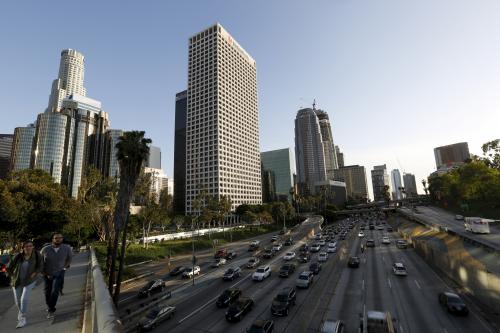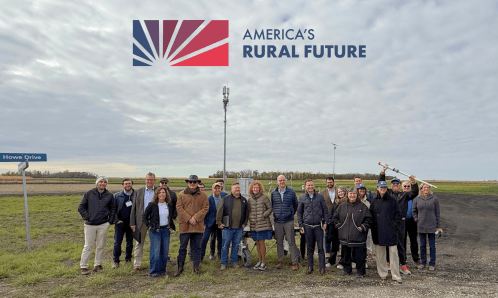On November 29th in D.C., an event co-sponsored by Carnegie Mellon’s Heinz College of Information Systems and Public Policy and the Global Economy and Development program at Brookings examined how the 17 U.N. Sustainable Development Goals (SDGs) can help U.S. cities tackle urgent local economic, political, and environmental challenges vital to the health and well-being of their residents.
Amy Liu, vice president and director of the Brookings Metropolitan Policy Program, kicked off the conversation. Senior Fellow Tony Pipa then moderated a discussion with Penny Abeywardena, commissioner for international affairs for New York City; Grant Ervin, chief resilience officer for Pittsburgh; Nina Hachigian, deputy mayor of Los Angeles; and Karen Lightman, executive director for Carnegie Mellon University’s Metro21 Smart Cities Institute.
Several important themes emerged that highlighted the opportunity that the SDGs provide to U.S. cities, to mayors, and to citizens:
Leading globally
As the federal government sits at the nexus of political divisions and the unraveling of long-standing international norms and alliances, U.S. cities are becoming standard bearers of American leadership here and abroad. The SDGs represent an agenda that aligns with the local goals of U.S. cities while offering the opportunity to speak in a common language and showcase U.S. innovation, pragmatism, and values—and drive global progress.
Unifying communities
To achieve the ambitious SDG agenda, cities will need public support and citizen engagement, which requires understanding where the passions of their residents overlap with city priorities and building coalitions of diverse stakeholders to strengthen the social fabric. Listening and responding to citizens’ needs can help deliver the SDG agenda. It also means integrating different but equally important dimensions of development. Policies meant to advance progress on climate change, for example, must simultaneously address inequities and inequality of opportunity, helping to create peaceful, just, and inclusive societies. The SDGs are not an “either/or” agenda—they require leaders to think in terms of “both/and.” Cities are places where this can happen most naturally.
Leaving no one behind
The SDGs reflect the strongly held U.S. imperative to create an economy of opportunity that achieves “the American Dream” and promotes economic mobility for all. Yet only two metro areas in the U.S. during the recent economic expansion have improved wages and employment for whites and workers of color, closing disparities. SDG targets and metrics provide a basis for helping cities address tough issues like homelessness, affordability, and health and educational outcomes, mobilizing policy and resources that take into account the most vulnerable, and enable their social and human development.
Promoting innovation
The interdependency among different objectives within the SDGs challenges cities to come up with new approaches so that progress can be shared widely among their residents. Applications of new technology and research, and partnerships with universities and businesses will be critical to producing the innovations that the SDGs demand.
Sharing results and best practices
With their emphasis on metrics and results, the SDGs push cities to communicate their progress on their priorities to their citizens. Yet as a globally agreed framework, they also provide a common language to share solutions, best practices, and innovations with a wide array of counterparts. As New York became the first city in the world to report their contributions to the United Nations on the SDGs, they have helped start a movement to enhance local accountability while creating partnerships globally.
With their reputation for pragmatism and, as Amy Liu put it, GSD (“getting stuff done”), U.S. cities are increasingly seeing the SDGs as a blueprint that captures the full breadth of their priorities and offers the opportunity to make local progress on issues with global implications. As several high-level meetings take place at the level of heads of state in 2019, raising awareness and demand for the agenda, we should expect that U.S. cities will increasingly lead the way on SDG implementation. Their leadership will be good for their citizens—and the world.
The Brookings Institution is committed to quality, independence, and impact.
We are supported by a diverse array of funders. In line with our values and policies, each Brookings publication represents the sole views of its author(s).






Commentary
US cities leading on the Sustainable Development Goals
December 19, 2018